JavaScript is a dynamic programming language that is widely used in web development. Even though it does not use explicit data types during declaration, understanding the different data types is of great importance. In this guide, you will learn about the data types JavaScript offers and how to use them effectively in your code.
Main insights
- JavaScript contains various data types: numbers, strings, and boolean values.
- JavaScript is dynamically typed, meaning that variables can change their data type at runtime.
- Understanding data types is crucial to avoid errors and unexpected behavior.
Step-by-Step Guide
1. Understanding the Basics of Data Types
In JavaScript, there are different types of data that can be stored. The main data types are numbers and strings, also known as character strings. It is important to know that numbers in JavaScript are treated without distinction between integers and floating-point numbers.
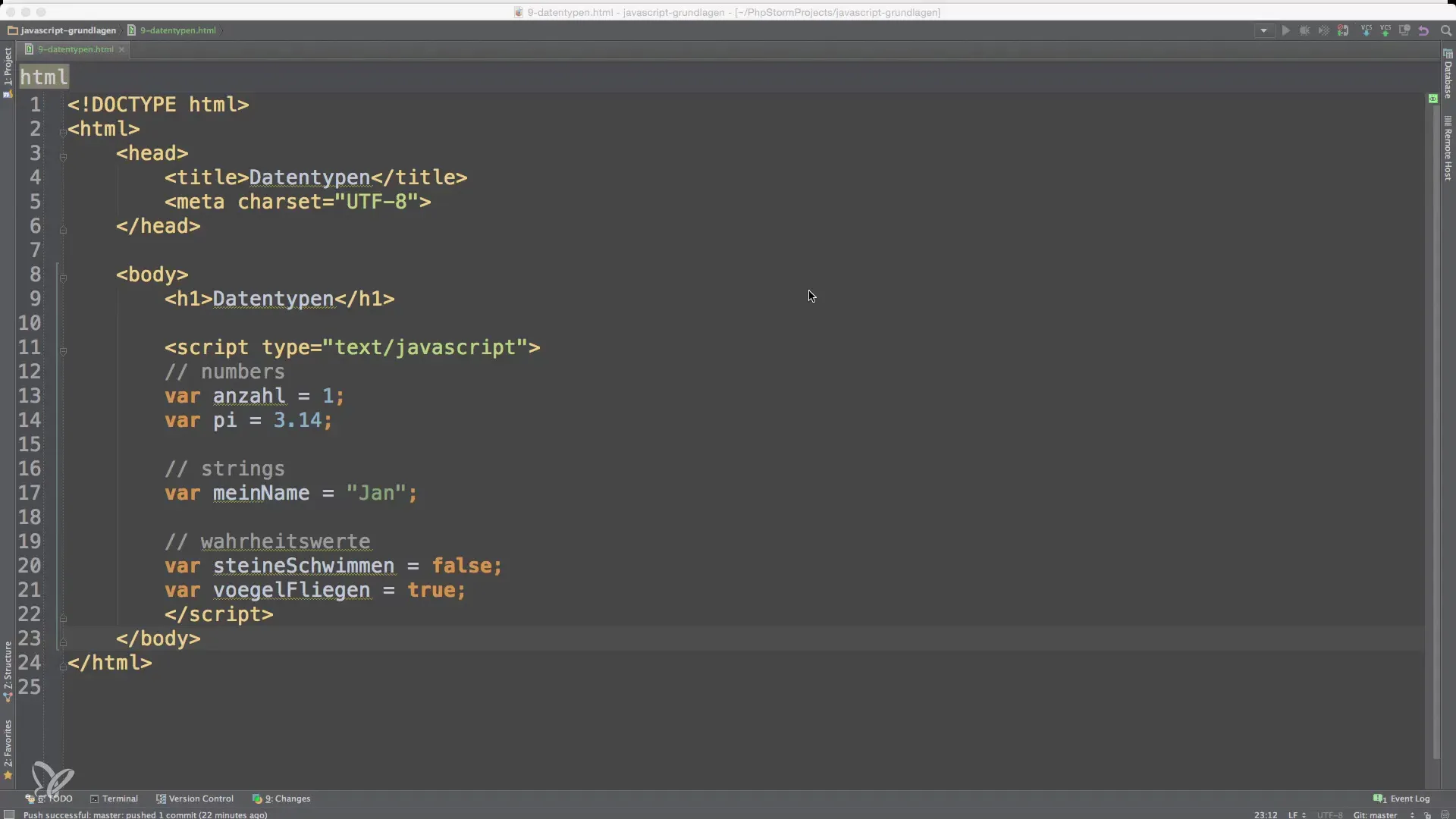
2. Numbers in JavaScript
Numbers in JavaScript can represent both integers and floating-point numbers. When using floating-point numbers, it is important to follow the American standard for decimal representation: the point is used as a separator instead of the comma, as is common in many European countries.
3. Strings and Their Use
Strings are character arrays written in quotation marks (either single or double). The main difference between the two types of quotation marks lies in readability and the handling of escape characters. Strings are also important for processing text data.
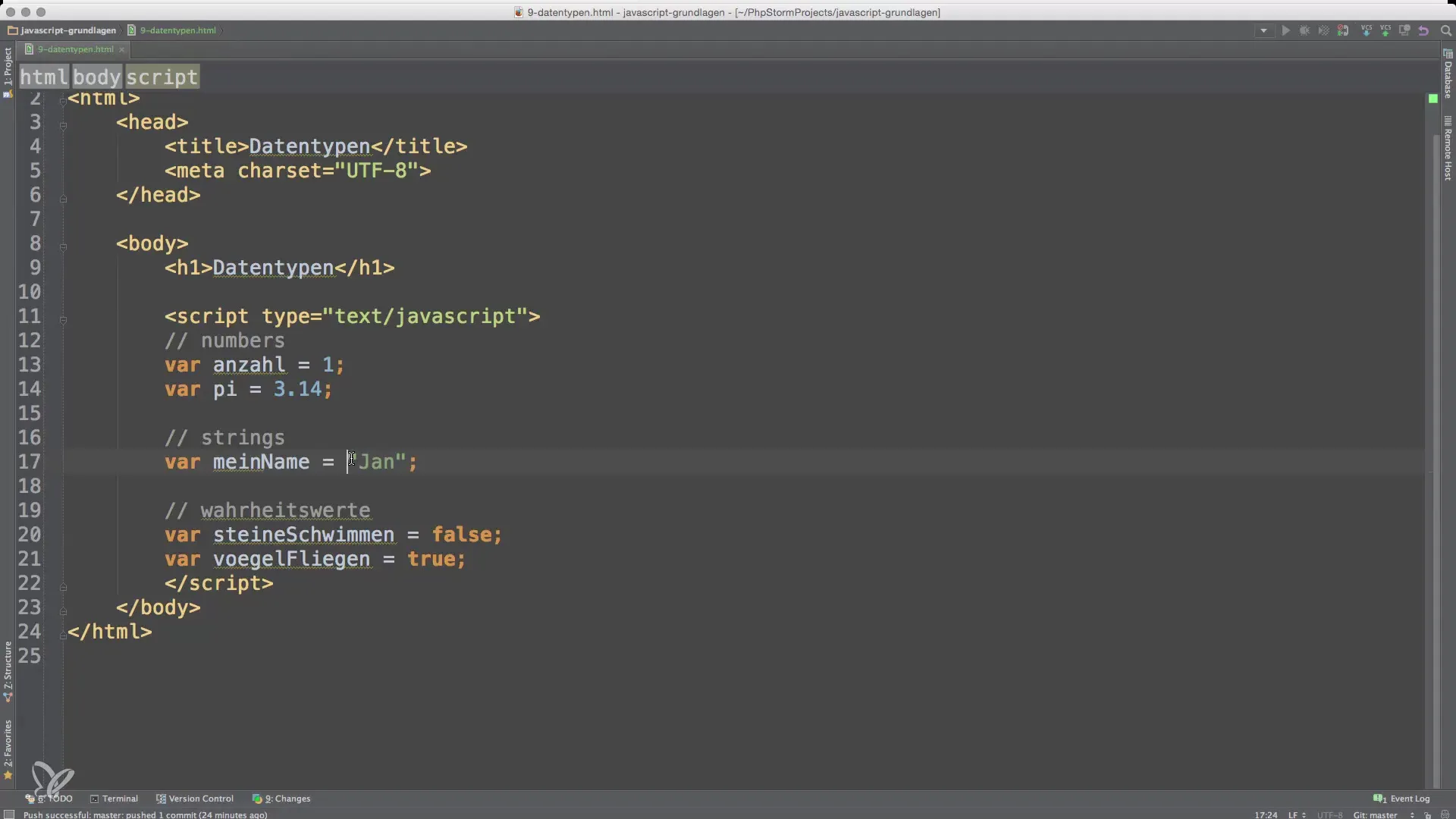
4. Boolean Values in JavaScript
Another useful data type is the boolean value. In JavaScript, there are only the two values true and false, based on logical statements. These values are particularly important for conditions and loops in your code. A simple example: “A rock floats” is false, while “A bird can fly” is true in most cases.
5. Variables and the Dynamism of Data Types
An interesting feature of JavaScript is dynamic typing. This means that you can assign a different type to a variable at any time. For example, a variable can first hold a number and later hold a string.
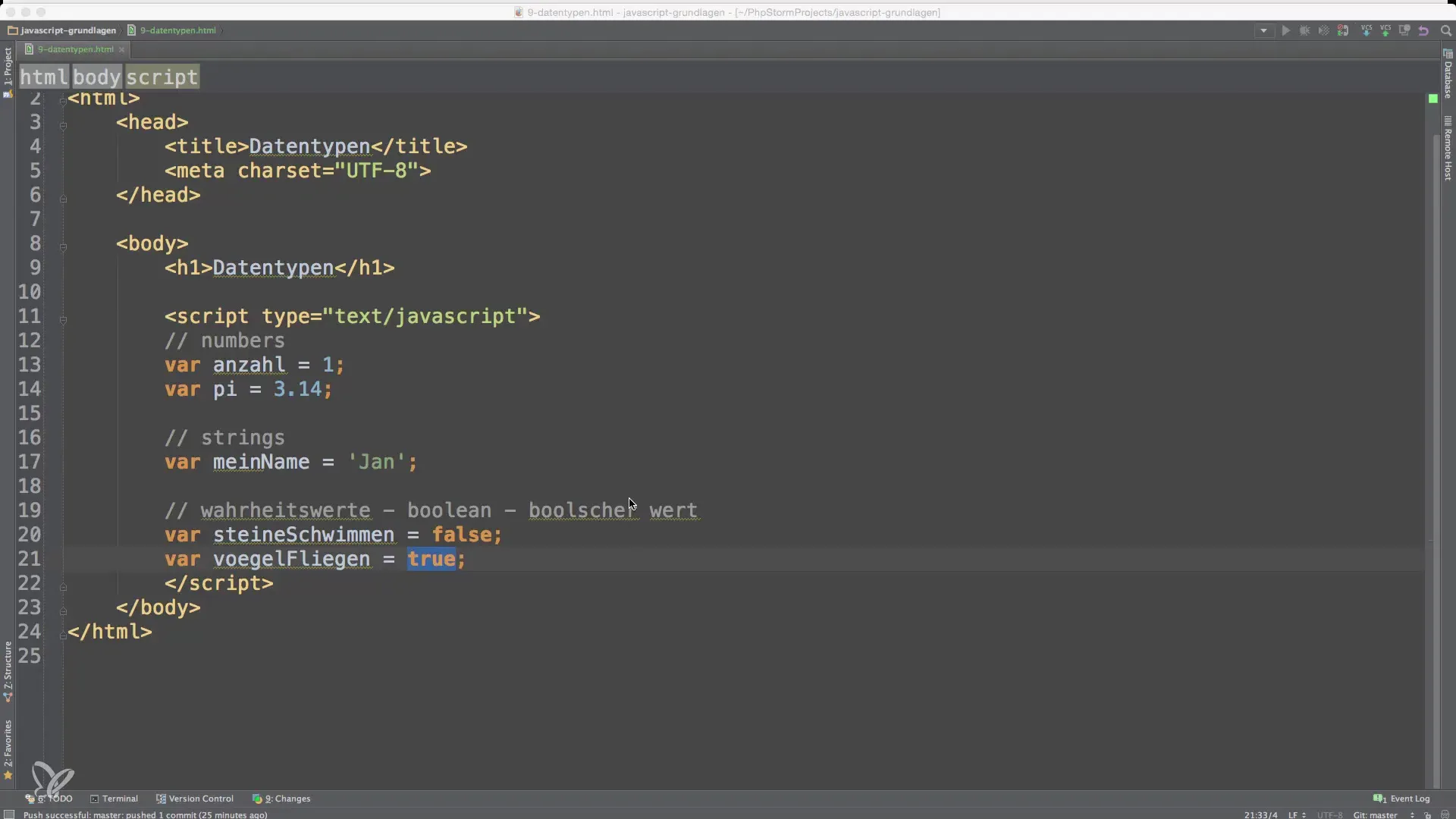
6. Practical Use of Data Types
Take a look at how using different data types affects the output. For example, when you initialize a variable with a number and then add a string, the data type is converted to a string, and the two contents are simply concatenated together.
7. Expressions and Their Order
The order of operations affects the result. In an expression, operations are processed from left to right. For example, in 100 + "Dog", the number 100 is concatenated with the string “Dog”, resulting in “100Dog”. Changing the order with parentheses can influence the result, such as in (100 + 1) + "Dog", which results in “101Dog”.
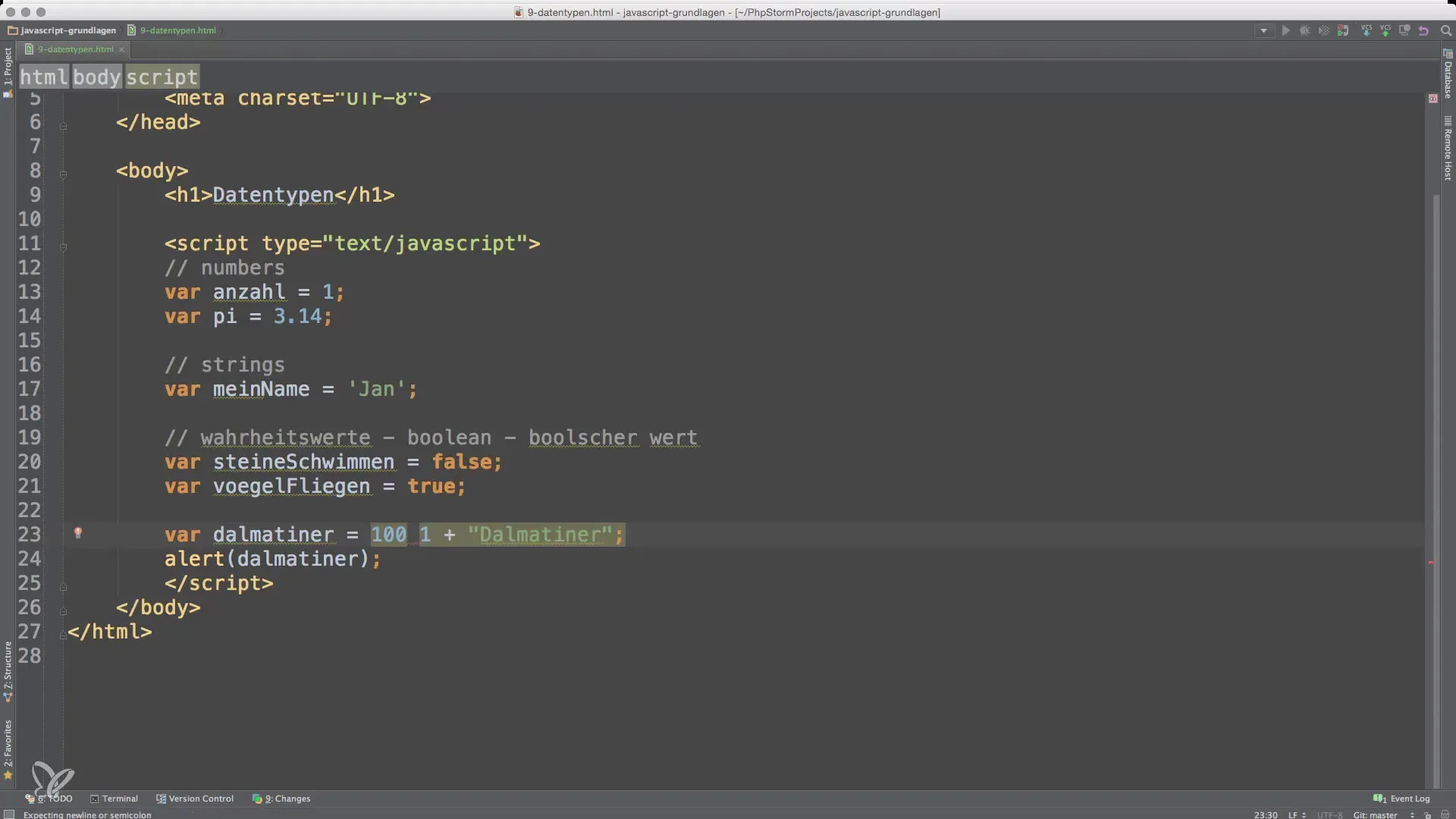
8. Experimenting with Data Types
It is recommended to experiment with the different data types in JavaScript to gain a better understanding of their handling. You can try out simple functions and outputs in a development environment.
9. Advanced Data Types: Arrays and Objects
JavaScript also offers more complex data types like arrays and objects. These data types can be stored in variables and are crucial for advanced programming concepts. Future tutorials will cover these topics in more detail.
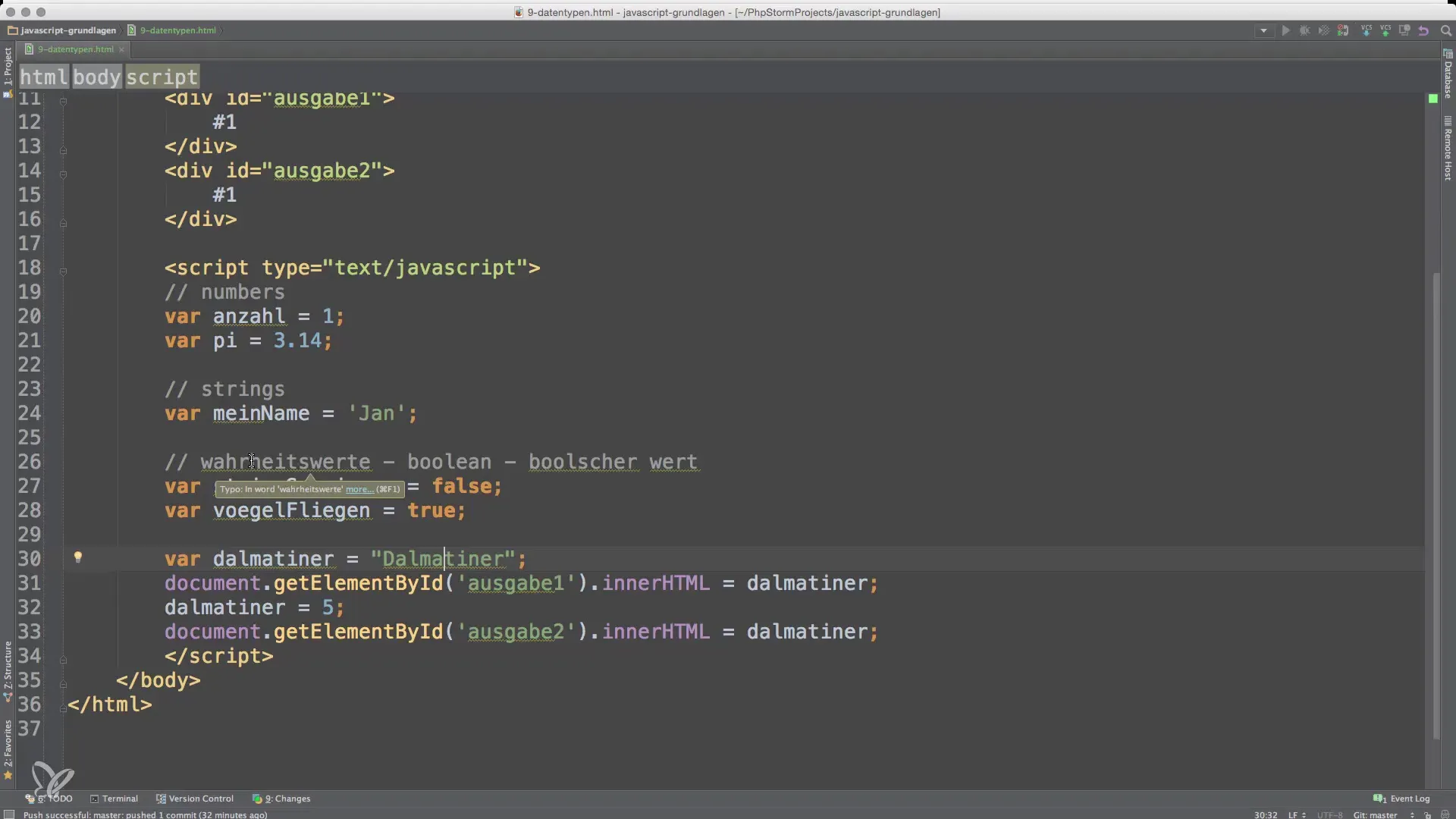
Summary – Basics of Data Types in JavaScript
The different data types in JavaScript are easy to understand, but their dynamic nature requires attention to avoid errors in the code. By consciously experimenting with numbers, strings, and boolean values, you can deepen your knowledge and become a more effective programmer.
Frequently Asked Questions
What are the basic data types in JavaScript?The basic data types in JavaScript are numbers, strings, and boolean values.
How does dynamic typing work in JavaScript?In JavaScript, the data type of a variable can be changed at runtime by assigning different values to it.
Why is the order of operations important?The order of operations is important because it can affect the outcome of calculations and expressions.
How do I define a string in JavaScript?A string is written in JavaScript in single or double quotation marks.
What are arrays and objects?Arrays and objects are complex data types in JavaScript used to store multiple values or key-value pairs.


